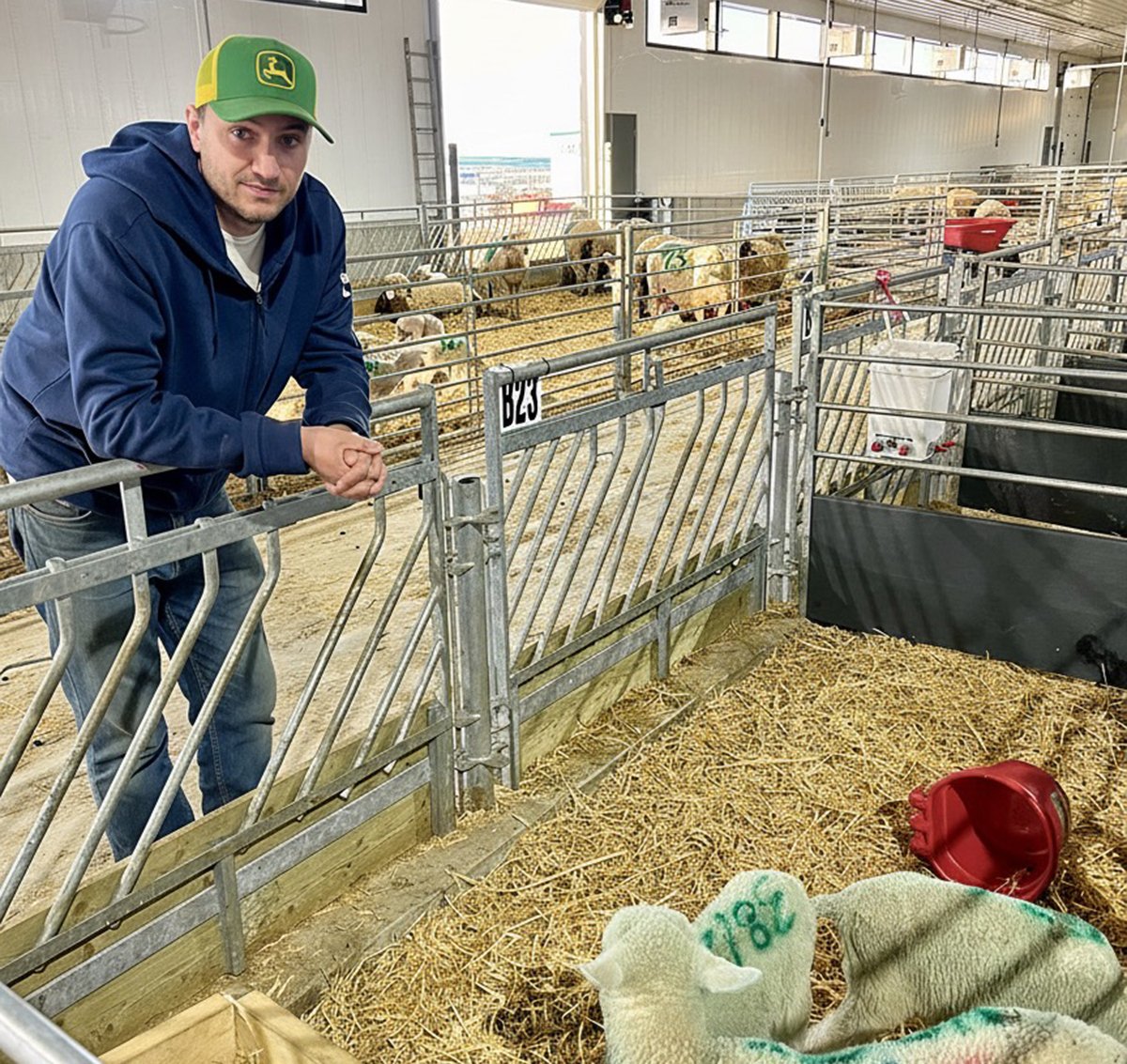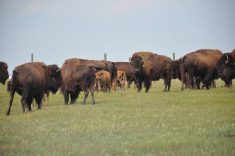RAPID CIY, South Dakota – David Hunter, chief veterinarian to the world’s largest bison rancher Ten Turner, asks a good question.
“There were 60 million bison on the plains when we (European settlers) arrived. There weren’t 60 million rounds of ammunition sold in the few years it took to get down to 500 to 1,000 head.
“Is the story that they were hunted to extinction wrong?” he asked a few hundred bison producers attending the International Bison Conference in Rapid City, S.D.
Hunter has an answer that helps illustrate why bison are resistant to many bovine diseases.
Read Also

Solar, sheep provide valuable farm diversification
Eric Steeves says raising sheep on forages grown under solar panels provided economic stability and perhaps even saved his family’s fifth generation southern Alberta grain farm.
He suggested disease eliminated the bison that couldn’t cope with typical bovine bugs.
With 46,000 head under his watch, Hunter said managing disease is critical to the success of Turner Enterprises’ herd.
“If we have a wreck, it’s a big one. And I have to answer to Mr. Turner for it. I can tell you, he doesn’t like big wrecks.”
Hunter uses the bison’s strengths to keep them healthy and is trying to avoid conditions that make them sick.
He said producers should take advantage of the bison immune system.
“The thing that compromises a bison’s immune system is stress,” he said.
On the 13 ranches that Turner operates, Hunter has been separating young males from the rest of the herd during winter feeding to get them away from the cows, calves and older bulls.
“We have to observe animals closely. What is unnatural for them creates stress,” he said.
When stressed, the animals release cortisol, which compromises their immune systems, and they fall prey to simple respiratory diseases.
“Disease is just another predator that we have to deal with. With 48,000 bison on two million acres and no control of wolves and bears, we see lots of predators.”
Hunter took the predator theory one step further when Turner was told in the late 1990s that his bison herd was loaded with Johnes disease and he was advised by animal health officials that the animals would need to be destroyed.
Hunter became the predator. His team culled any animals that appeared to be struggling or were showing excess stress. Several thousand animals were killed and sampled for disease.
He developed a program of moving calves and cows off feces-loaded soils, especially until the young are older than six months.
The Turner herds were also pushed to spread out while calving.
“It’s been nine years. We’ve got 48,000 bison and we had one case of Johnes last year. We’re Johnes-free by federal standards,” he said.
Hunter dealt with respiratory disease from an environmental perspective as well.
“You just have to watch bison to know bison love dust. But it turns out that dust is making them sick.”
In testing the Turner herd, Hunter found that 100 percent were positive for the mycoplasma bacteria. He observed that the bison seemed to suffer more than cattle and began looking for agents that could carry the disease into the more vulnerable parts of the respiratory system.
“It was deep in the lung, along with dust. We controlled the dust and we controlled the disease,” said Hunter.
Observation will tell producers a lot about herd health said Roy Lewis, a veterinarian from Westlock, Alta.
Bison are more susceptible than cattle to worms, both in the lung and gut, said Lewis, speaking at the bison conference in Rapid City. He said producers should regularly examine feces for the worms, especially if it appears loose.
“If it’s been wet, and stock are exposed to damp soils and muddy conditions, expect to treat for the worms up to three times (per year).”
Lewis said animals suffering from worms tend to have poor coats, weight loss, lethargy and lack of appetite. With lung worms, coughing is also a symptom.
He said if the herd appears to have a degree of immunity to worms, then new animals should be introduced only after a fecal test.
“If you find worms, begin checking thinner animals in the area.”
Lewis said researchers will grow out worm eggs to determine the type, but in his experience it makes little difference and treatment is the same. Only one drug is registered for use in bison, however veterinarians will prescribe cattle drugs for off-label use.
“You have to be very careful about withdrawal times, though. In some cases it’s double the dose, so we have to err on the side of caution when it comes to withdrawal,” he said.
Adding drugs to feed or water can be a challenge because producers must ensure that all the animals receive the appropriate dosages.
Water is a better measure but drugs need to be kept in solution, so producers need to use circulatory pumps in their water supplies.
“Feed is tough one. An animal that is off its feed doesn’t eat. So it doesn’t get the medicine.”
Adding crumble type medicated products to grain can work, as can strategic feeding so that all animals get the product in the pasture.
Pour-on products are effective, but these require getting animals into a handling system.














